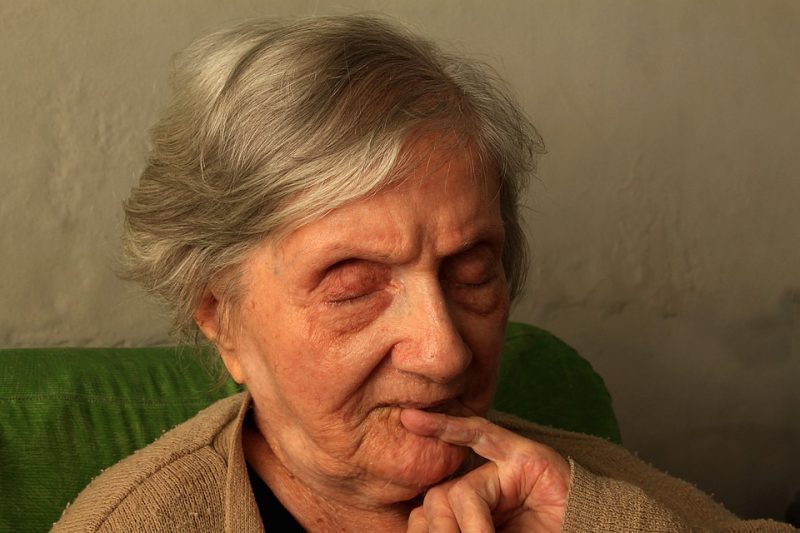
In the mid-1950s, Dr. Denham Harman, MD, Ph.D., proposed the free radical theory of aging while a resident in internal medicine. Dr. Harman had studied chemistry and physics at UC Berkeley, medicine at Stanford, and worked for Shell Oil where he exploited free radical chemistry to kill flies (patenting the Shell No-Pest Strip).
Harman’s theory stemmed from his search for the cause of aging. Aging is hard to describe. It is not a disease; it’s a process that is quite familiar, seemingly inevitable, and results in (i) loss of tissue homeostasis (proper physiological function), (ii) impaired ability to respond/recover from stress, and (iii) an exponential increase in the risk of morbidity and mortality. Old age is the number one risk factor for dementia and heart disease. But it is difficult to imagine at a cellular or even molecular level what these two diseases have in common.
Harman proposed that free radicals are the common denominator. Free radicals are produced in our bodies as part of normal metabolism and are simply molecules that have an extra electron. This makes them highly reactive. Harman proposed that these reactive free radicals damage all components of our cells. Over time, this damage accumulates and manifests as aging. The theory is the nidus of a multi-billion dollar industry of anti-oxidant products meant to stave off the aging of our bodies and our skin. Several vitamins or essential components of our diets are anti-oxidants. If Harman’s theory was correct, increasing the intake of vitamin C and E should slow aging.
But that was not the case. In fact, reams of data collected over the next several decades seemed to counter the free radical theory of aging. Excess vitamin C and E did not reap health benefits. Mice genetically engineered to have increased levels of the same protein antioxidants made in humans do not always live longer or healthier. These negative data were countered by arguments that vitamins don’t penetrate every corner of a cell to diffuse radicals, complex redox chemistry where anti-oxidants can toggle between a pro- and anti-oxidant state, or complex cell biology in which free radicals are sometimes beneficial and essential for cellular communication, and, thus, shouldn’t be suppressed. Today, the controversy remains whether Harman’s free radical theory is correct. And the stakes are higher than ever since there is currently a lot of interest in finding ways to therapeutically target processes that drive aging in order to prevent/delay/attenuate all age-related diseases.
To study causes and treatments of aging, our labs employ a mouse model of a human progeroid syndrome or disease of accelerated aging. This approach too is controversial because progeroid syndromes happen to children, so it is unclear whether these diseases faithfully represent an acceleration of normal aging processes. The progeroid syndrome we study is caused by a lack of DNA repair mechanisms in the nucleus of the cell. This is completely unrelated to free radical chemistry. We reasoned that if free radicals were a cause of aging, then despite the fact that aging in our mice occurs for an unrelated reason, there must be increased free radicals and free radical damage in our mice. Further, if our mutant mice have accelerated aging, the same outcomes should appear in normal mice, albeit much later in life.
Indeed, that’s what we discovered. The progeroid mice had increased superoxide anion (a reactive oxygen species [ROS] related to free radicals, but more stable so easier to measure) in multiple organs. And normal mice 6X older had the same levels of superoxide. Progeroid and very old mice also had evidence of oxidative damage to all parts of the cell: DNA, proteins, lipids. The activity of proteins that make ROS in cells was increased in both types of mice, while levels of proteins required to defuse ROS were low. This is consistent with increased free radicals/ROS and explains why levels are up.
An important trick we used was measuring a specific type of oxidative DNA damage called cyclopurine (CP) adducts. These are signatures of DNA damage caused by ROS/oxygen-based free radicals. CPs were high in the progeroid mice. This could be due to: (i) failure to repair those adducts due to the DNA repair deficiency, or (ii) a signature of increased ROS. When we looked at CP levels in a related DNA repair-deficient mouse, CP levels were not high. This proves that the DNA damage is there due to increased ROS, not just a defect in DNA repair. Consistent with that, treating the progeroid mice with a special anti-oxidant that removes ROS/free radicals from the mitochondria (Harman’s favored source of damaging free radicals) reduced oxidative damage to cell parts and delayed age-related diseases in the mice including osteoporosis, chronic kidney disease, and osteoporosis.
Collectively, this study provides strong evidence from a unique and unexpected source in support of the free radical theory of aging. It also argues that it might be wise to revisit the value of anti-oxidants as a therapeutic intervention to tackle aging if they can be targeted to the right compartment of the cell, such as the mitochondria. However, rigorous science is required to prove any given anti-oxidant lowers the abundance of free radicals and the accumulation of damage in cells. And dosing must be carefully titrated to optimize their health benefits.
These findings are described in the article entitled Spontaneous DNA damage to the nuclear genome promotes senescence, redox imbalance and aging, recently published in the journal Redox Biology. This work was conducted by a team from the University of Pittsburgh, The Scripps Research Institute, the University of California, Riverside, G. Gaslini Children’s Hospital, Genoa, Italy, the Polish Academy of Sciences, the Mayo Clinic, the University of Warsaw, The Ohio State University, and West Virginia University.









